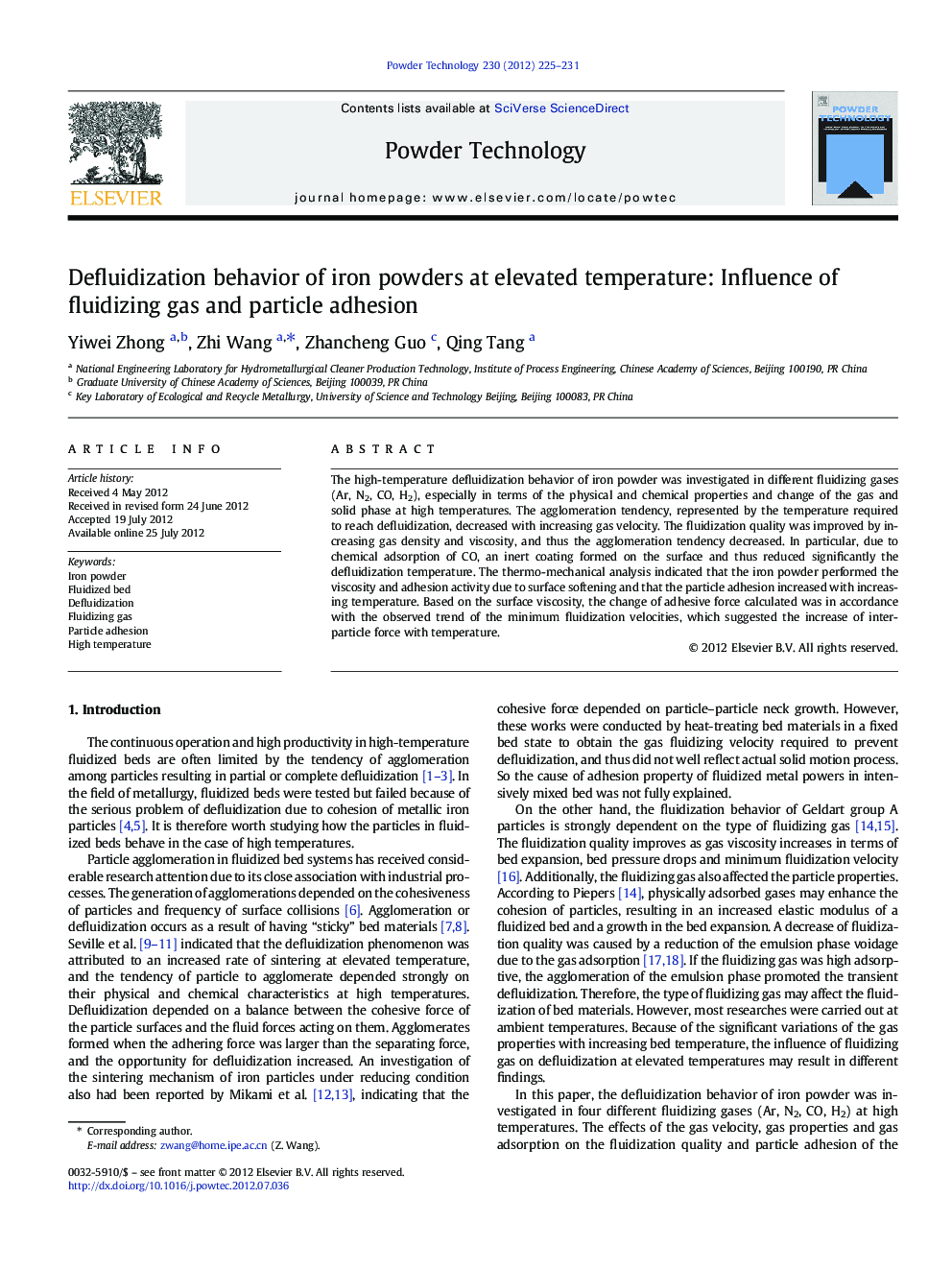| کد مقاله | کد نشریه | سال انتشار | مقاله انگلیسی | نسخه تمام متن |
|---|---|---|---|---|
| 236997 | 465690 | 2012 | 7 صفحه PDF | دانلود رایگان |

The high-temperature defluidization behavior of iron powder was investigated in different fluidizing gases (Ar, N2, CO, H2), especially in terms of the physical and chemical properties and change of the gas and solid phase at high temperatures. The agglomeration tendency, represented by the temperature required to reach defluidization, decreased with increasing gas velocity. The fluidization quality was improved by increasing gas density and viscosity, and thus the agglomeration tendency decreased. In particular, due to chemical adsorption of CO, an inert coating formed on the surface and thus reduced significantly the defluidization temperature. The thermo-mechanical analysis indicated that the iron powder performed the viscosity and adhesion activity due to surface softening and that the particle adhesion increased with increasing temperature. Based on the surface viscosity, the change of adhesive force calculated was in accordance with the observed trend of the minimum fluidization velocities, which suggested the increase of inter-particle force with temperature.
The defluidization temperature increased with increasing gas velocity. Comparing the four fluidizing gases, larger density and viscosity caused higher defluidization temperatures. The highest defluidization temperature for CO was due to the formation of surface coating. On the other hand, the relative adhesion force arising from surface softening increased with temperature and thus intensified the probability of defluidization.Figure optionsDownload as PowerPoint slideHighlights
► The defluidization temperature increased with increasing gas velocity, gas density and viscosity.
► Chemical adsorption of CO formed an inert surface coating and prevented defluidization.
► The particle adhesion based on surface viscosity increased with increasing temperature.
Journal: Powder Technology - Volume 230, November 2012, Pages 225–231